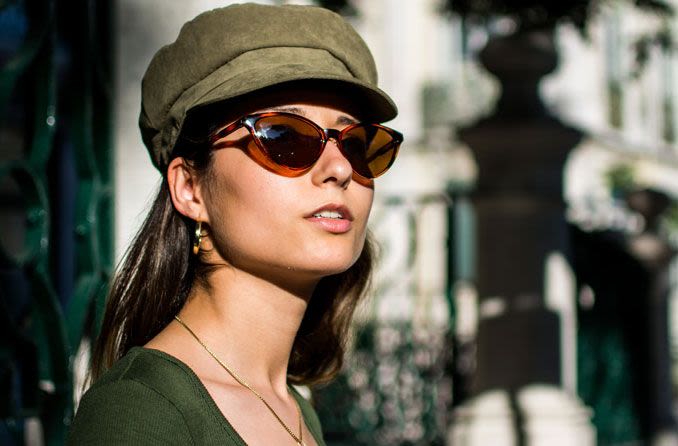Nonprescription sunglasses: What to know before buying

Everybody loves wearing sunglasses — and most people wear nonprescription sunglasses.
Nonprescription sunglasses (also called "plano" sunglasses) are sunglasses that contain no lens powers to correct vision problems. As their name suggests, you do not need a prescription from an eye doctor to purchase nonprescription sunglasses.
And nonprescription sunglasses are sold everywhere — from doctors' offices to high-end boutiques to gas stations. Prices can range from extremely affordable to extravagantly expensive, depending on features, materials, and whether they are generic sunglasses or designer sunglasses.
Choices of nonprescription sunglass frames and lenses are nearly limitless.
Nonprescription sunglasses when you need vision correction
Many people who have nearsightedness, farsightedness, or astigmatism choose to correct their vision with contact lenses and wear nonprescription sunglasses with their contacts.
The alternative is to wear prescription sunglasses rather than contact lenses and nonprescription sunglasses.
If you need vision correction and you find a pair of nonprescription sunglasses you really like, there's a good chance your eye care professional can replace the plano lenses with prescription lenses of the same color.
Another option is to have LASIK or other vision surgery to correct your refractive error and then wear nonprescription sunglasses without contact lenses.
Essential features
No matter where you choose to buy nonprescription sunglasses, it's important to purchase only sunglasses that block 100 percent of the sun's harmful ultraviolet (UV) rays.
Overexposure to UV rays can lead to serious eye problems over time, including permanent sun damage to the front surface of the eye (cornea), cataracts, and even certain cancers.
The amount of UV protection nonprescription sunglasses provides has nothing to do with the color or density (darkness) of the lenses. UV radiation is invisible and is not significantly impacted by lens tints. It's the lens material and coatings on sunglass lenses that block UV rays.
Most good-quality nonprescription sunglasses will have a label or tag attached to the lenses that indicates the level of UV protection the sunglasses provide. If you're not sure how much UV protection your nonprescription lenses provide, take them to your eye doctor or an optical store to be analyzed.
If your sunglasses don't provide sufficient protection, your eye doctor or optician often can order new lenses that will provide 100 percent UV protection.
Enhancements
For even greater comfort when wearing nonprescription sunglasses, look for styles that feature anti-reflective coating on the back surface of the lenses. This will eliminate glare from light reflecting off the back of the lenses when the sun is behind you.
Another option is to purchase nonprescription sunglasses with photochromic lenses that are clear indoors and automatically darken outdoors in sunlight. These lenses typically are available only at optical stores or eye doctors' offices. Ask an optician to show you a demo of these sun-activated tinted lenses.
And if you want the best protection from glare caused by light reflections, purchase nonprescription sunglasses with polarized lenses. These lenses have a special filter in the lens material that eliminates extremely bright reflections of light from water and smooth, shiny surfaces (like automobile windshields).
Polarized lenses reduce eye strain outdoors and are especially beneficial for seeing beneath the surface of bodies of water when boating or fishing.
Page published on Thursday, January 23, 2020






